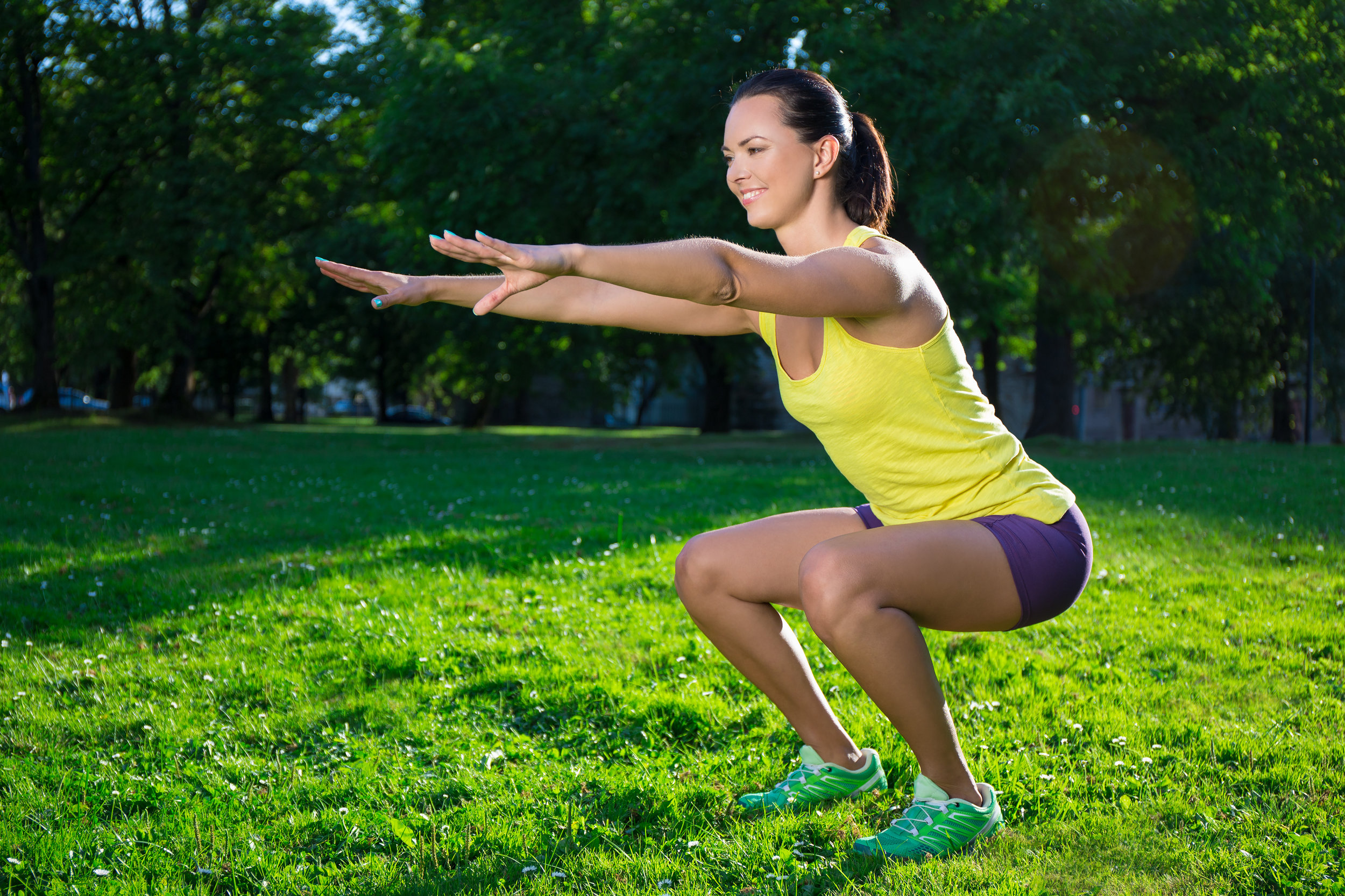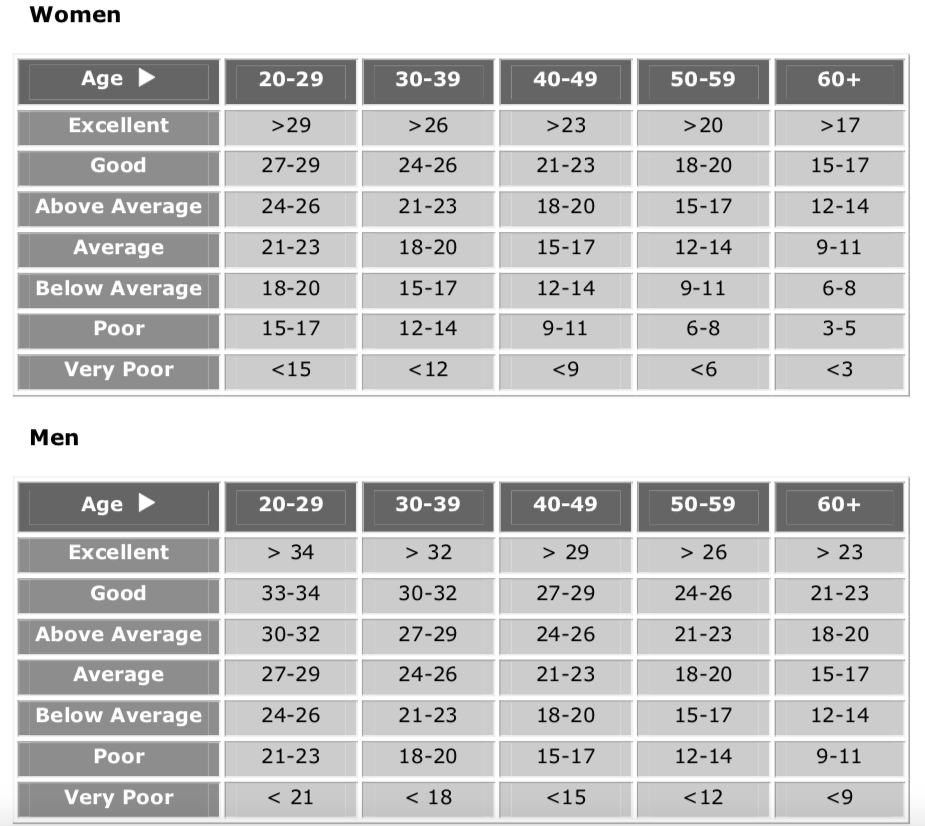This is a great fitness test to try at home as it needs very little equipment. It's also great as you can record your total and aim to beat it over time; I've set out a simple training programme below that can help you to better your score in future.
Why squat?
There are loads of benefits to adding squats to your exercise routines...
1. Research has linked being able to perform more squats with a lower risk of mortality...or put simply, dying. That's because they're a great marker of your overall ability to function; to get in and out of a chair, up and down the stairs or to have the leg strength to maintain your balance and prevent falls
2. Another study in 2015 showed a link between brain function and leg strength. Twins were tested and the ones who maintained leg strength better over a ten-year period also saw a much smaller decline in cognitive performance. This may be because the leg muscles are the largest and therefore a strong indicator of overall health and fitness
3. You'll tone and strengthen lots of muscles, including your legs, bum and core (in fact, you'll likely tone your stomach much more with squats than with sit-ups because of all the extra muscles utilised and calories burned as a result). Done regularly you'll feel and see improvements in confidence, health and sports performance.
4. They're also a cracking exercise for keeping you mobile and strengthening bones and joints. They can help decrease risk of osteoporosis, arthritis and ankle, knee, hip and lower back problems, as well as manage existing issues if pitched at the right level.
5. Add in the fact that they don't need fancy equipment and can be done literally anywhere and you've got yourself one truly balanced exercise!
Test yourself
Here's a simple squat test you can use to assess your leg strength and endurance. There are links to easier and harder alternatives at the end of this blog if you prefer.
Get a sturdy chair without soft cushioning (a dining room chair is ideal) and place it with its back against a wall.
Warm up for 5-10 minutes by walking, doing step-ups, marching/jogging on the spot or anything else that gets you feeling warm and a bit sweaty
Stand in front of the chair and keeping your heels on the floor, squat down until your bum taps the chair before lifting straight back up til you're completely upright, knees not locked out. Try a repetition or two to practice if you wish.
When ready, perform as many squats as you can until you need to stop and check how you got on against the tables below.
Taken from the Australian College of Sports & Fitness
Improve
Here's a simple training plan you can follow if you'd like to improve your score.
If you scored less than 30:
Do sets of 10 until you reach a number greater than your total from the test. For example, if you scored 17, do 2 sets of 10; if you scored 26, do 3 sets of 10.
Have a 30-second rest between each set.
Aim to do this 2-3 times each week and re-test the following week.
If you scored more than 30:
Do sets of 20 until you reach a number greater than your total from the test. For example, if you scored 36, do 2 sets of 20; if you scored 51, do 3 sets of 20.
Have a 30-second rest between each set.
Aim to do this 2-3 times each week and re-test the following week.
Each time you re-test, take your new total score and adapt the training programme based on the above guidelines.
Alternative tests
This test is a little easier and was designed for people aged 60-94 year's old to assess leg strength: https://exrx.net/Calculators/SeniorChairStand
This one is a toughie and a good choice if you're after a squat test that challenges you both physically and mentally: https://www.topendsports.com/testing/tests/wall-sit.htm
Be sure to share your score with us and we'll check in on your progress next week!


